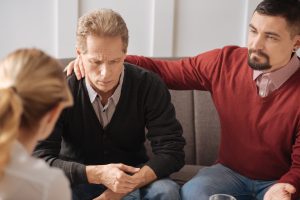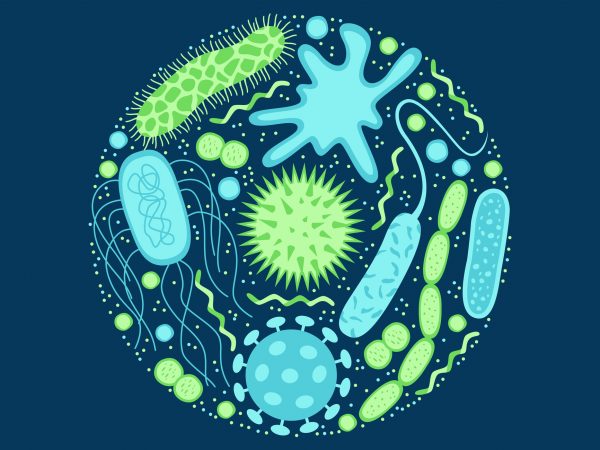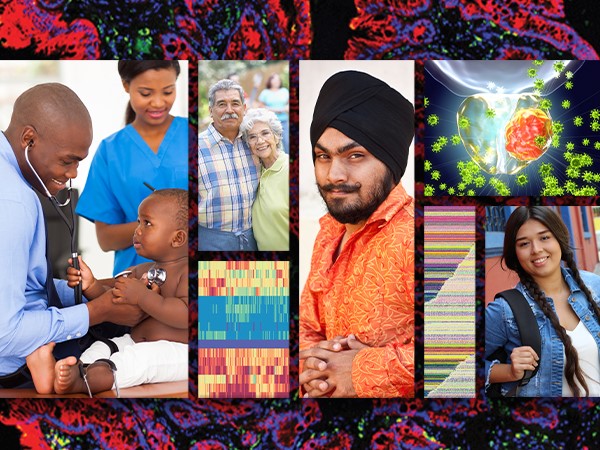Examining Cancer Health Disparities in the LGBTQ Community
The injustices come in many ways.
A transgender woman is admitted to the hospital for cancer treatment. Her physicians decide to wean her from the hormones that have enabled her to live as a woman.
A gay man in his final stages of his cancer journey receives a visit from a Catholic priest, who tells him that his sexuality is a mortal sin.
A gay couple holds hands as one partner receives cancer treatment, and staffers roll their eyes, or scurry away, or giggle.
A lesbian woman is diagnosed with cervical cancer … and she never thought she was at risk.
In a groundbreaking plenary session at The 12th AACR Conference on the Science of Cancer Health Disparities in Racial/Ethnic Minorities and the Medically Underserved, a panel of practicing physicians and researchers detailed countless factors that contribute to disparities in the LGBTQ community.
Disparities surrounding sexual orientation and gender identity are a fairly new niche within the disparities research community. The issues that contribute to higher incidence of some cancer types, higher mortality, and lower satisfaction among survivors have existed for a long time. But for decades, many patients were reluctant to share their sexual orientation or gender identity, and health care providers rarely asked.
“Why should we care? A tumor doesn’t care if a person is gay or straight,” Charles Kamen, PhD, assistant professor at the University of Rochester Medical Center, asked rhetorically. “We must care, because there are significant disparities in the sexual and gender minority community.”
Kamen said that while certain disparities are proven, overall, a lack of data has limited what experts know about cancer in LGBTQ patients. In many health care practices, questions on intake forms are limited to male or female, married or single. A 2018 study showed that among practice groups in the National Cancer Institute’s Community Oncology Research Program, about 24 percent routinely asked patients about their sexual orientation (such as heterosexual, homosexual, bisexual) and only 10 percent asked about gender identity (including transgender, gender nonconforming, etc.) The practices that did collect the data were disproportionately located in urban areas or states that tended to have liberal political leanings, leaving LGBTQ people in other areas underrepresented.
The panelists urged health care practitioners to ask about sexual orientation and gender identity, noting that a simple question on a form can relieve a patient’s stress over having to reveal it themselves.
“Cancer patients are not only willing to tell, they want to tell,” explained Liz Margolies, LCSW, the executive director of the National LGBTQ Cancer Network and a cochair of the session. “We want to bring our whole selves into treatment.”
Cervical cancer disparities: both sexual and racial
Madina Agénor, ScD, MPH, the Gerald R. Gill Assistant Professor of Race, Culture, and Society at Tufts University in Medford, Massachusetts, said disparities research should maintain an intersectional focus, considering race and socioeconomic status along with sexual or gender identity. Those factors often work together to shape a patient’s experience with cancer, as she has seen in her research on cervical cancer prevention, she explained.
The U.S. Centers for Disease Control and Prevention (CDC) recommends that all boys and girls receive two doses of the human papillomavirus (HPV) vaccine beginning at age 11 or 12. In 2015, Agénor led a study in which she compared uptake of the HPV vaccine among young women who identified as lesbian and those who identified as heterosexual. Agénor emphasized that lesbian women can contract HPV and should be vaccinated.
Using data from the National Survey of Family Growth, she found that among women aged 15 to 25 who had heard of the HPV vaccine, 28.5 percent of all women had initiated the vaccine series.
Among heterosexual women, the initiation rate was almost identical—28.4 percent. However, among the women who identified as lesbian, only 8.5 percent had initiated the HPV vaccine. In expanded research published in 2018, Agénor found that black lesbian teens were by far the least likely group to initiate vaccination.
“We need tailored cervical cancer prevention interventions that consider race as well as sexual or gender identity,” she said. “One size does not fit all.”
Survivors tell a complicated story
Several presenters noted that LGBTQ cancer survivors are more likely than their heterosexual peers to report depression or anxiety, more likely to use drugs or alcohol, and less likely to exercise.
Jennifer Jabson Tree, MPH, PhD, associate professor in the Department of Public Health at the University of Tennessee in Knoxville, explained that some interventions designed to support cancer survivors may not work well for the LGBTQ population.
“These interventions are mostly conducted face-to-face, in public settings. For a patient in an area where there is still a high stigma attached to being a sexual minority, they may not want to come to a program like this,” she explained.
She added that by the time a patient has survived cancer, he or she may have experienced social isolation, stress over repeatedly coming out to health care providers, and a lack of compatible support groups. She said considering sexual identity through the entire continuum of cancer care can help reduce some of these stressors.
“We need to maximize inclusion and increase the opportunities for people to live their best lives, in their best health,” she concluded.
Disparities at the end of life
Earlier this year, a lesbian couple who were considered experts in end-of-life care, having authored books on hospice and palliative care, were faced with the unthinkable: One of the women was diagnosed with advanced ovarian cancer at age 53 and had only weeks to live.
The couple declined hospice care.
“They knew what makes a good hospice experience and what makes a bad one, and they did not want to have a bad experience in their home, which was their safe haven,” explained Shail Maingi, MD, a medical oncologist at St. Peter’s Health Partners, Troy, New York.
The end of life often presents major crises for families, and those who struggled over sexual and gender identity have extra layers of distress, Maingi explained.
A typical scenario is that a dying LGBTQ patient may find an estranged family member making decisions about palliative care, health interventions, and who should receive information on the patient’s care. For transgender patients, they may fear they will be buried with their birth names, as their birth gender.
Like her colleagues, Maingi said research on this topic is hampered by insufficient data. She urged providers to collect information on sexual orientation and gender identity, with broad categories and open-ended questions that allows individuals to correctly describe themselves. More data will ultimately result in better outcomes for this population, she said.
“Without sexual orientation and gender identity data collection, these patients are invisible and this work does not move forward,” she said.




